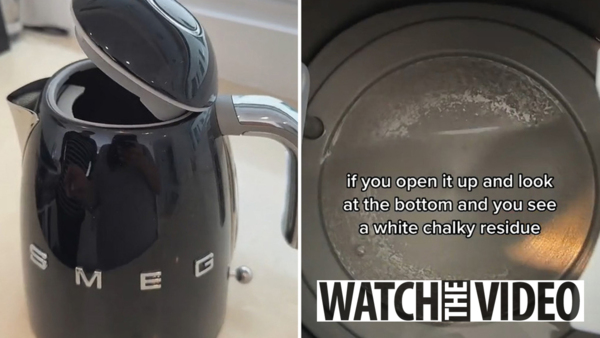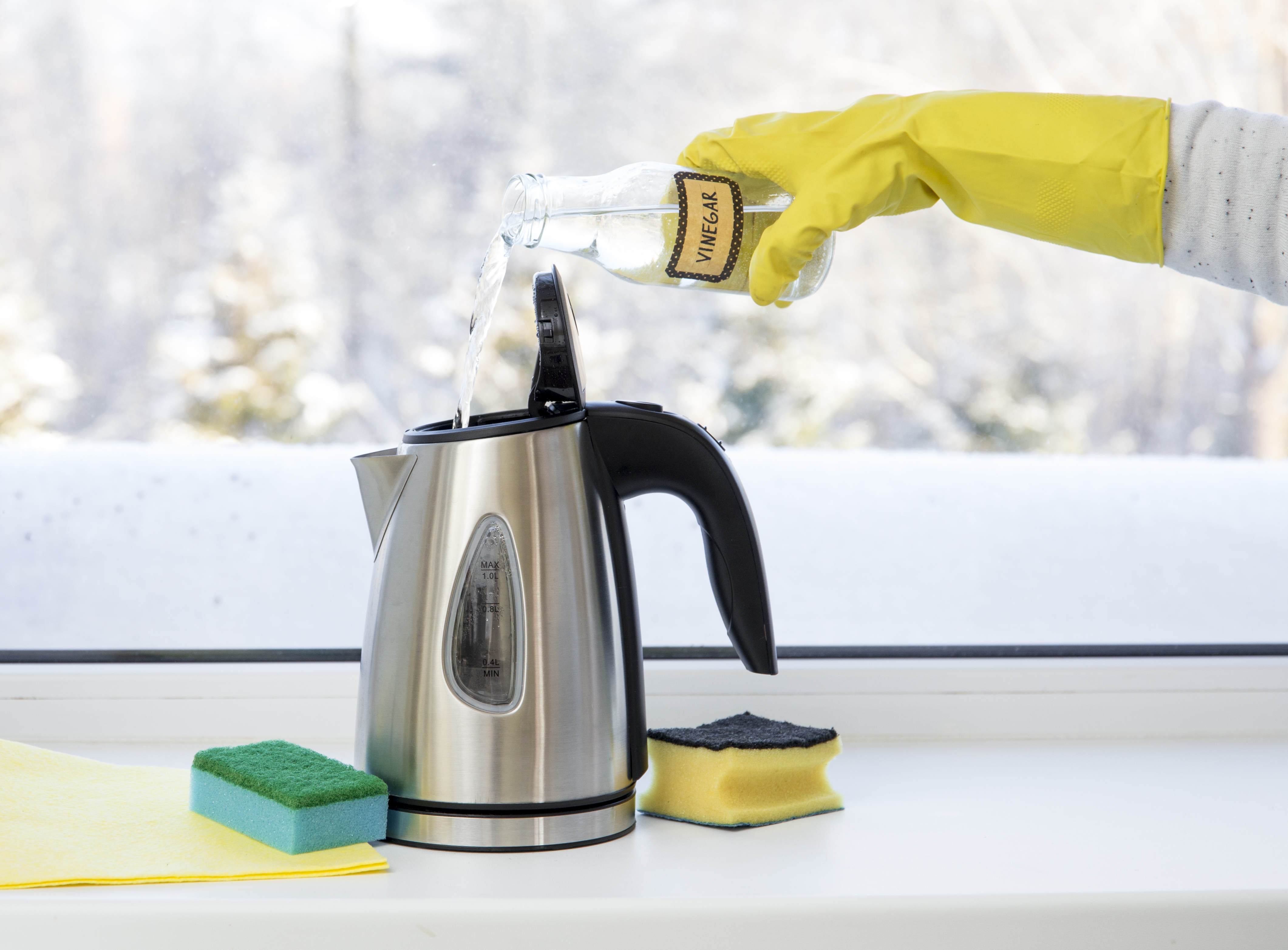
CLEANING your kettle might be one of those chores that you can put on the back burner.
However, it is an important job that you need to stay on top of. Here's a how-to guide to make sure your kettle is always ready to use.
How to descale a kettle?
There is a technique in particular that cleaning experts stand by, which is using bicarbonate of soda or white vinegar to get the grime off your kettle.
However, there are also other household products that will do the job.
This includes lemon juice, which melts the limescale off and also leaves a nice smell behind.
Or if you want to go down the professional route, you could invest in some sachets specifically created for the job - which can be bought for as little as £1.
Here's how to descale your kettle in a few easy steps:
Using bicarbonate of soda
This method tends to work best on smaller kettles, or ones without much limescale or build-up.
It's also good if you already stay on top of cleaning your appliances regularly and just need to give the appliance a little spruce.
Here's a guide of how to use bicarbonate of soda to clean your kettle:
Most read in Fabulous
- Fill the kettle a quarter of the way with some water and then place a full tablespoon of bicarbonate of soda
- Boil the kettle and allow it to sit with the boiled water and bicarbonate of soda for an hour, before pouring it out and rinsing it
- Finally, fill the kettle with water once more and boil it to remove any remaining bicarbonate of soda to avoid a nasty taste the next time you make some tea
Distilled white vinegar and water
Another fool proof method is white vinegar and water.
But, if you have sensitive skin and want to remove the limescale from the spout with vinegar, always wear gloves to avoid irritation.
Here's how to descale your kettle using white vinegar:
- Fill the kettle halfway with water and add vinegar for the other half
- Boil the kettle
- Pour all the liquid out
- Boil the kettle again, this time just using water, to remove any taste of vinegar
If it doesn't remove all the limescale, repeat the process until you have your desired results.
Which? says this technique is a great one to consider.
They said: "Limescale dissolves very easily when treated with a mild acid, and white distilled vinegar is a cleaning cupboard staple in many homes across the country.
"It's cheap, hassle-free and can be used to tackle a variety of stubborn messes."
Using lemon juice
Lemon juice is a handy tool when cleaning anything around your house, and your kettle is no different.
This method is effective at removing any traces of limescale, and is also super cheap.
According to the experts at Which?, it also leaves a nice lingering scent.
They explained: "Most household acids will do a decent job of dissolving limescale, so if you don’t have white vinegar to hand you could also use citric acid or lemon juice – the results shouldn’t be too different, and the smell will be a little more pleasant."
Here's how to use lemon juice to descale your kettle:
- Fill the kettle halfway with lemon juice
- Fill the other half of the kettle with water
- Boil the mixture and let it sit for half an hour until the limescale starts to peel off
- Pour out the lemon and water, and rinse generously
Descaler products
If you've tried everything and nothing is working, there are also some handy products on offer in shops to specifically help out with descaling your kettle.
If you decide to go for any of them, just carefully follow the instructions on the package and sit back and watch the results.
What is limescale?
Limescale is a chalky substance mostly found in rocks and shells.
It has an off-white colour but can also be grey, pink, or a reddish-brown.
When found in kettles, limestone is the insoluble calcium and magnesium deposits that are left behind when hard water evaporates.
It forms in kettles when water is heated or left standing for too long.
In short, in hard water areas, limescale is inevitable.
Why is there limescale in my kettle?
Limescale in kettles forms as a result of frequent exposure to hard water as it contains large amounts of calcium and magnesium.
If water is left in your kettle it starts to form a flaky coat and will stick to the inside.
Hard water has a high mineral content and is mostly found in London and southeast England.
Water in areas such as Scotland, Northern Ireland, Wales and the southwest and northwest of England tend to have softer water, which is lower in its mineral content but has a higher sodium one.
The Midlands are in between and some areas tend to have harder water than others.
Why do you need to descale a kettle?
It is important to descale your kettle regularly due to the calcium deposits.
The limescale is detrimental to your tea or coffee drinking experience, but if left too long, it can also shorten the lifespan of your kettle.
So it's important to regularly clean your kettle so you don't find yourself needing to buy a new one.
Is limescale in a kettle bad for me?
Limescale is not bad for you due to it being a natural-occurring substance.
That being said, limescale can change the taste of water and other liquids.
Read More on The US Sun
If you are in an area where the tap water is hard and contains larger amounts of limescale, it is recommended you use a water filter where possible.
Limescale cannot cause health problems such as kidney stones, but if left uncleaned for too long, limescale can prove to be great breeding ground for bacteria.
Cleaning hacks and tips

Here are some tips to help you clean your home like a pro:
- How to clean your washing machine in a few easy steps
- Keep on top of cleaning your oven regularly
- Clean your shower to ensure it's always sparkling
- How to clean your microwave using cheap household items
- Here's how to get rid of that nasty limescale in your kettle
- You're cleaning your carpet all wrong - here's how to get it spotless again in no time
- Unblock a toilet without a plunger
- Clean your fabric or leather sofa in a few easy steps
- If you haven't cleaned your mattress in ages, here's how
- Steps to cleaning your dishwasher to leave it looking brand new
- This is how to clean mirrors and windows without streaking
- Keep your toilet clean in four easy steps
- Give your TV screen a once-over
- Did you know your Venetian, Roman, vertical, or roller blinds also need cleaning?
- Deep-clean your fridge in five simple steps








